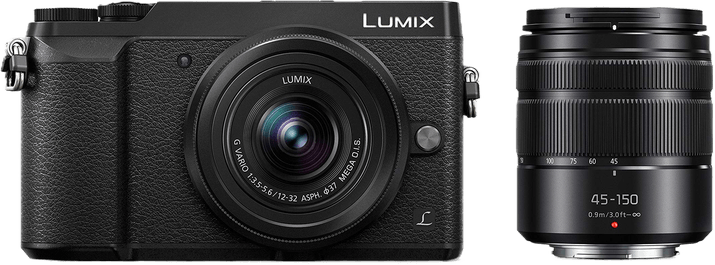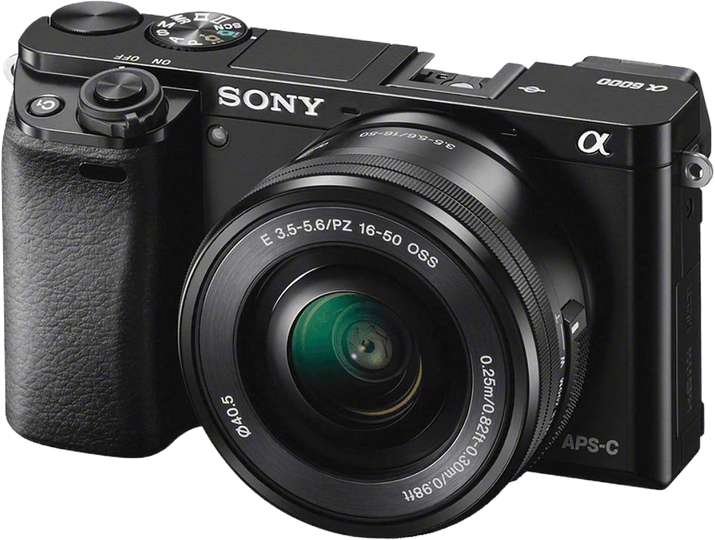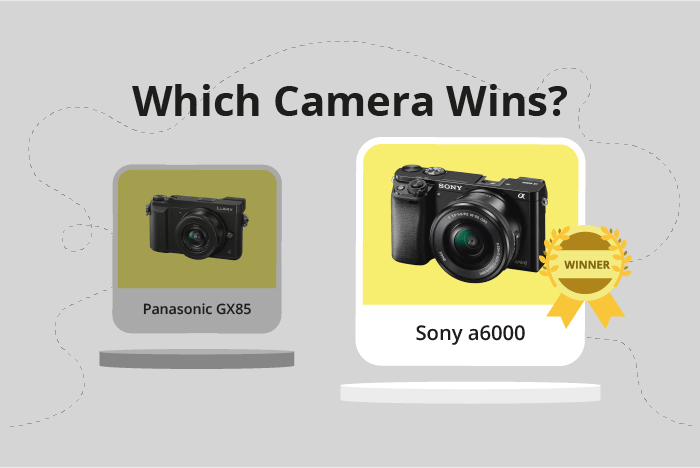Panasonic Lumix GX85 (GX80) vs Sony a6000 Comparison
Panasonic Lumix GX85 (GX80)

Sony a6000

The Sony a6000 outperforms the Panasonic Lumix GX85 (GX80) with a score of 57/100 compared to 54/100. Both cameras are mirrorless and share similar launch prices, with the GX85 at $800 and the a6000 at $799. The a6000 has the advantage of being lighter, weighing 344g, while the GX85 weighs 426g. However, the GX85 has a slightly larger body, measuring 122 x 71 x 44mm compared to the a6000’s 120 x 67 x 45mm.
The Sony a6000’s higher score indicates that it is a better camera, offering more features and better performance. The Panasonic Lumix GX85, on the other hand, still offers a solid option for photographers, especially those who prefer a slightly larger and heavier camera for better grip and stability. Both cameras have their strengths and weaknesses, and the choice ultimately depends on the user’s preferences and needs.
Panasonic Lumix GX85 (GX80) vs Sony a6000 Overview and Optics
The Sony a6000 outperforms the Panasonic Lumix GX85 (GX80) in optics, scoring 67/100 compared to the GX85’s 55/100. Both cameras share common specifications, such as having a CMOS sensor, and different processors: the Venus Engine for the GX85 and the Bionz X for the a6000. They also have different aspect ratios, with the GX85 having a 4:3 ratio and the a6000 featuring a 3:2 ratio.
The Sony a6000 excels in several aspects, including a higher megapixel count of 24.3 compared to the GX85’s 16 megapixels. This enables the a6000 to capture more detail in images. Additionally, the a6000 has a faster shooting speed of 11 frames per second (fps) compared to the GX85’s 8 fps, allowing for better action photography. The a6000 also has a superior DXOMARK sensor score of 82, compared to the GX85’s 72, indicating better overall image quality. Furthermore, the a6000 features an APS-C sensor size and a Sony E lens mount, providing compatibility with a wider range of lenses.
On the other hand, the Panasonic Lumix GX85 has built-in image stabilization, which the Sony a6000 lacks. This feature helps reduce camera shake and ensures sharper images, particularly in low-light situations or when using longer focal lengths.
Taking these factors into account, the Sony a6000 stands as the superior camera in terms of optics, offering higher image quality, better performance, and broader lens compatibility. However, the Panasonic Lumix GX85’s built-in image stabilization provides an advantage in specific shooting conditions, making it a viable option for photographers who prioritize stability.
Panasonic GX85 (GX80) vs Sony a6000 Video Performance
The Panasonic Lumix GX85 outperforms the Sony a6000 in video capabilities with a score of 83/100, a significant 27-point lead over the Sony a6000’s score of 56/100. Both cameras share some common video specifications, such as a maximum video frame rate of 60fps, providing smooth and fluid motion in videos.
The Lumix GX85 excels with its 4K video resolution and maximum video dimensions of 3840 x 2160, offering sharp and detailed footage that is four times the resolution of Full HD. Additionally, this camera includes a built-in time-lapse functionality, allowing for creative and engaging video content without the need for additional software or accessories.
In contrast, the Sony a6000 only offers Full HD video resolution with maximum video dimensions of 1920 x 1080, resulting in less detailed and less immersive footage compared to the Lumix GX85. Furthermore, the a6000 lacks built-in time-lapse functionality, limiting its video capabilities and requiring users to invest in external solutions for time-lapse videos.
While the Sony a6000 falls short in video capabilities, it is still a capable camera for basic video recording, offering smooth 60fps footage in Full HD. However, for those seeking higher quality and more creative video options, the Panasonic Lumix GX85 is the clear winner in this comparison, boasting superior video specifications and added features such as 4K resolution and built-in time-lapse functionality.
Panasonic Lumix GX85 vs Sony a6000 Features and Benefits
The Panasonic Lumix GX85 (GX80) outperforms the Sony a6000 in terms of features with a score of 57/100 compared to the Sony a6000’s 41/100. Both cameras share some specifications, including a 3-inch screen size, the lack of GPS, and the presence of Wi-Fi connectivity. They also both have flip screens, providing flexibility for different shooting angles.
The Lumix GX85 surpasses the a6000 with its touchscreen capabilities and higher screen resolution. The touchscreen allows for more intuitive and efficient control while navigating menus, selecting focus points, and reviewing images. Moreover, the GX85’s screen resolution of 1,040,000 dots is higher than the a6000’s 921,600 dots, resulting in crisper and clearer image previews.
Despite having a lower feature score, the Sony a6000 does have some advantages. For example, both cameras lack Bluetooth connectivity, which means that the a6000 is not necessarily worse in terms of wireless connectivity options. Additionally, it is important to consider other aspects, such as image quality, performance, and lens options, where the a6000 may excel, even though this comparison focuses on features.
Taking these factors into account, the Panasonic Lumix GX85 stands out as the winner in the features category, thanks to its touchscreen and higher screen resolution. However, the Sony a6000’s strengths should not be overlooked, as it may still be a suitable choice depending on individual preferences and requirements. Ultimately, the choice between these cameras should be based on a comprehensive evaluation of all their specifications and potential use cases.
Panasonic Lumix GX85 vs Sony a6000 Storage and Battery
The Sony a6000 outperforms the Panasonic Lumix GX85 in storage and battery with a score of 29/100 compared to 16/100. Both cameras share one memory card slot and accept SD, SDHC, and SDXC cards. However, the Sony a6000 also supports Memory Stick Pro Duo and Pro-HG Duo cards, providing more storage options.
In terms of battery life, the Sony a6000 has an advantage with 360 shots per charge, while the Panasonic Lumix GX85 offers 290 shots. Both cameras use different battery types: the Sony a6000 uses the NP-FW50, and the Lumix GX85 uses the DMW-BLG10.
Despite the higher storage and battery score, the Panasonic Lumix GX85 (GX80) does not have any advantages in these categories compared to the Sony a6000. Therefore, the Sony a6000 proves to be the better choice for storage and battery performance.
Panasonic Lumix GX85 (GX80) vs Sony a6000 – Our Verdict
Are you still undecided about which camera is right for you? Have a look at these popular comparisons that feature the Panasonic Lumix GX85 (GX80) or the Sony a6000:

